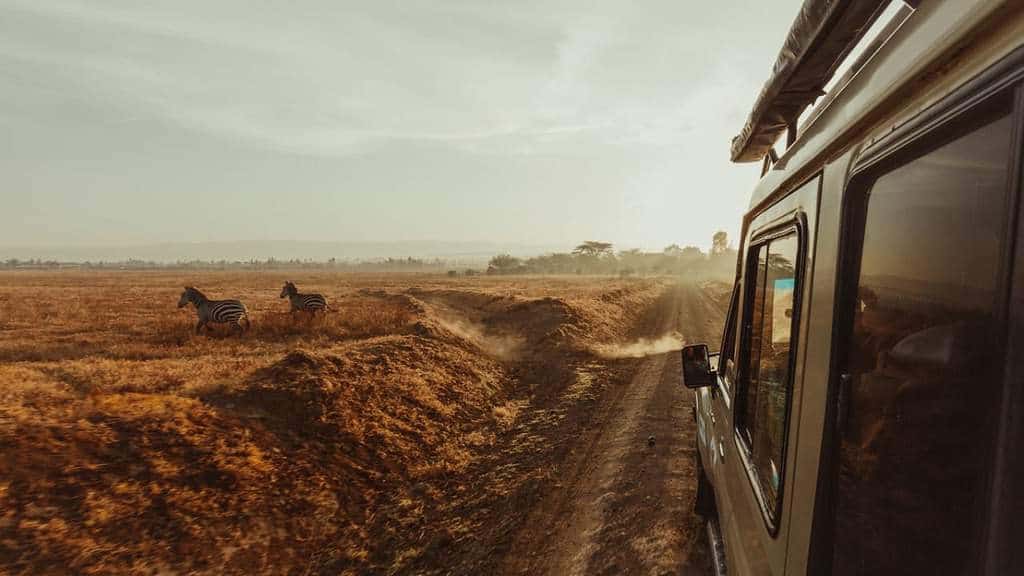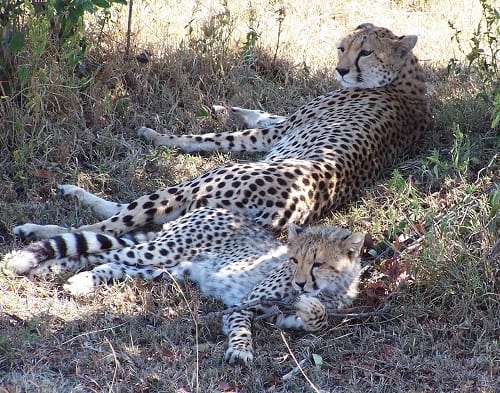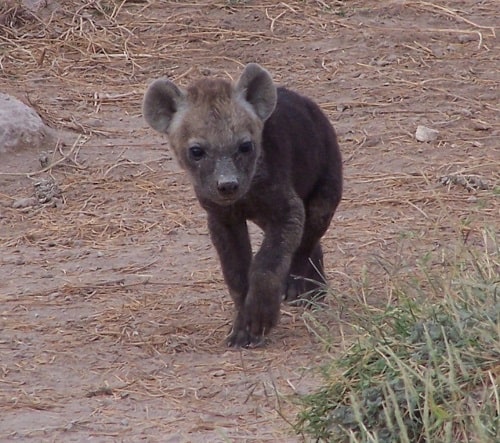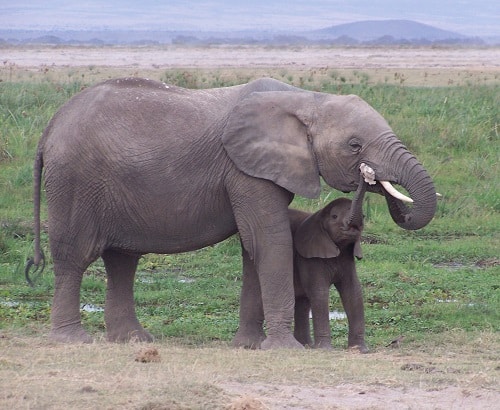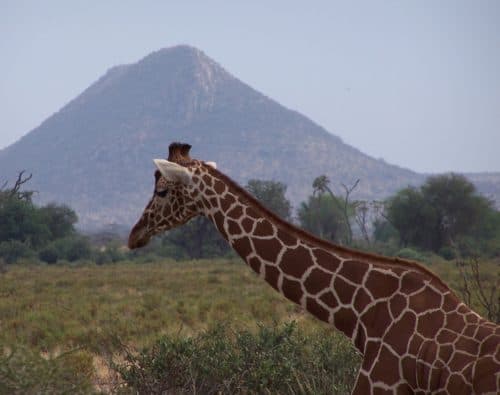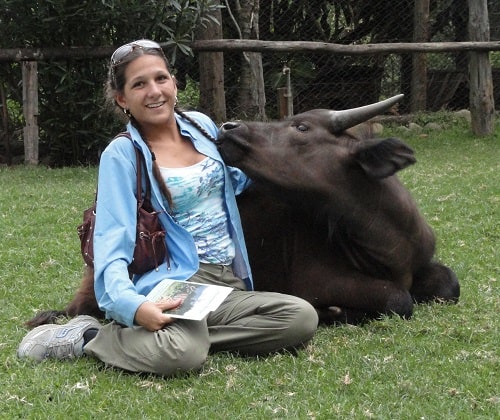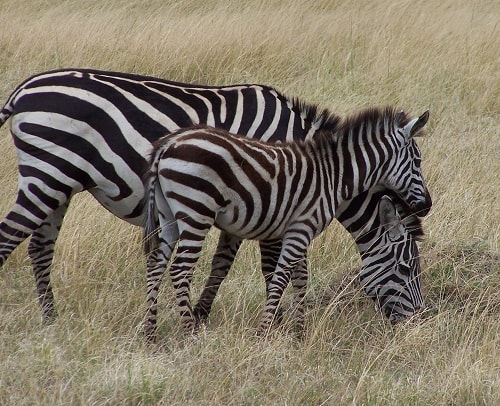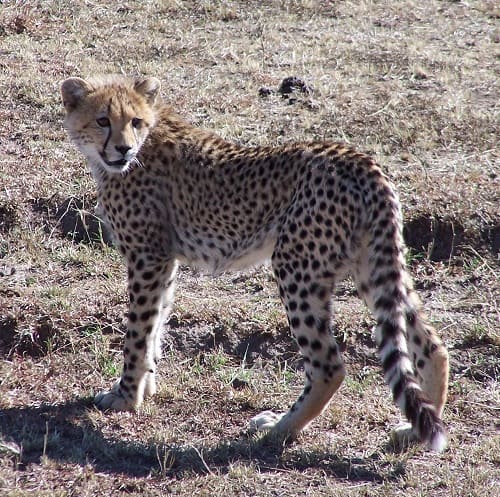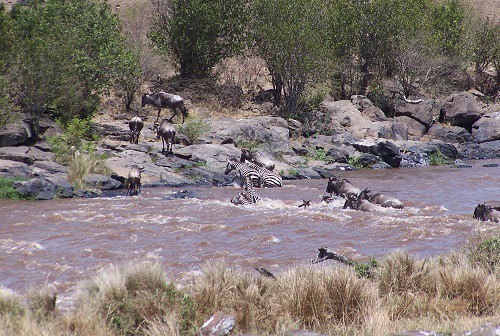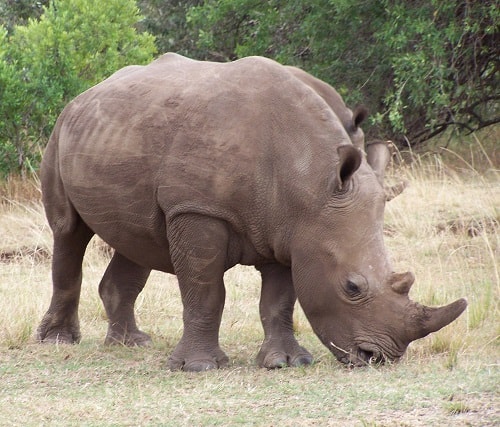Kenya Itinerary: 7 Day Safari Experience
Indulge your adventurous side by embarking on a 7 day safari traversing through Kenya while blending luxury and comfort with raw unscripted wildlife adventures. From walking alongside rhinoceroses, to being hypnotized as you watch thousands of wildebeests and zebras swarm into murky waters to cross the Mara River while threatening crocodiles lurk nearby waiting for the perfect chance to strike. A trip to Kenya on safari during the Great Migration is impossible to forget.
- Kenya Itinerary: 7 Day Safari Experience
- When to Travel to Kenya for a Safari
- Select a Tour Operator
- Traveling to and Around Kenya
- 7 Days on Safari in Kenya
- First Stop: Amboseli (1 night)
- Second Stop: Samburu (2 nights)
- Third Stop: Mount Kenya (1 night)
- Fourth Stop: Maasai Mara (2 nights)
- Fifth Stop: Nairobi (1 night)
- Safari Add-Ons
- Frequently Asked Questions about a Kenya Itinerary with a Safari
When to Travel to Kenya for a Safari
Wildlife viewings are plentiful year round. Anytime between June and October, which is the dry season, is an excellent time to visit Kenya. Since there’s less rain, this naturally corresponds to there being fewer mosquitoes, and animals are generally easier to spot since they often congregate by water sources.
A visit to Maasai Mara from around August through September gives you the chance to witness perhaps the most incredible wildlife spectacle in the world, when the migratory animals cross the Mara River. The wildebeest migration consists of an estimated 1.5 million wildebeests, accompanied by ~250,000 zebras, and antelope species often reach Maasai Mara around August and they generally start returning back to the Serengeti as the rains begin again. While the migratory pattern is fairly predictable, the exact timing can never be guaranteed as the animals are moving in search of better grass.
Winetraveler Tip: If you’re scheduling your trip around the Great Migration and you have an extra week, I recommend spending a week in Tanzania first and then pick up this itinerary that saves the Mara River crossings as the grand finale. Follow along with our suggested 7 day Tanzania safari itinerary.
Select a Tour Operator
There are many tour operators to choose from at a wide range of price points to guide you on a Kenya Safari. Selecting a reputable company with experienced guides will maximize your safari experience. We booked our trip with Odyssey Safaris. You’ll get to see the “Big Five” game animals: lion, elephant, Cape buffalo, leopard, and rhinoceros. The trip is completely customizable and they’ll walk you through every step of the planning process and offer recommendations based on your personal travel preferences and budget.
Every detail about our trip with Odyssey was flawless, luxurious, adventure-packed, and exceeded all expectations. Without the expertise of our guides, we would have easily driven by many lions and a few cheetahs without ever realizing they were there. The tawny colored fur of lions and the spotted fur of leopards and cheetahs blends right into the tall blades of the beige dry grass. The guides communicated with each other throughout the park about the whereabouts of any highly sought after sightings and brought us close to any within reach.
Schedule a Kenya Safari Experience with Odyssey Safaris
Traveling to and Around Kenya
If you started in Tanzania, you can cross the Namanga border post, clear Immigration formalities and start your journey to Amboseli, Kenya. Alternatively, you can fly into Nairobi and then transfer to Amboseli. You can search for deals on flights here.
The day-to-day driving is in safari vehicles by experienced guides. To avoid very lengthy car drives, this itinerary suggests taking a few single-engine charter planes departing and landing at small airstrips. You can search for these flights with Safari Link.
7 Days on Safari in Kenya
First Stop: Amboseli (1 night)
Amboseli National Park is well-known for its large elephant population of about 1,200, and viewing immense wildlife while the magnificent towering Mount Kilimanjaro rises in the backdrop. This park, which has been recognized as a Biosphere Reserve by UNESCO, is located in southern Kenya on the border of Tanzania. Herds of elephants with white ivory tusks cool off in the swampy waters mostly submerged, baby elephants nurse and walk alongside their mothers, and you may witness two male elephants aggressively fight to establish dominance.
Hyena clans lay sprawled out along the dry earth while little babies scurry in and out of shaded holes and nestle into their mother’s tummies. I never realized how adorable baby hyenas were and how much they resembled puppies.
Other common wildlife encounters include zebras, wildebeests, buffalos, giraffes, hippos, gazelles, some lions, and occasional cheetahs. We only came across a few lions in Amboseli, no cheetahs, and we were told leopards are rarely seen.
Where to Stay in Amboseli
The luxurious Amboseli Serena Safari Lodge is nestled into the grasslands of the national park. The rooms are comfortable and aesthetically pleasing. From the spacious outdoor terrace, which is a great place to toast a wonderful day of safari adventures, you may see zebras, elephants, impalas, and gazelles scattered over the expansive savanna plains. Vervet monkeys, which are cute little monkeys with black faces and grayish colored fur, may accompany you.
You can arrange a Champagne toast on top of Observation Hill with tasty appetizers before returning back to the lodge for a bush dining experience among the murmurs of wildlife. Observation Hill, a large hill overlooking the park, boasts having fantastic views of Mount Kilimanjaro, especially at sunset.
Winetraveler Tip: Travelers desiring to splurge on ultra-luxurious accommodation, check out Elewana Tortilis Camp Amboseli.
Second Stop: Samburu (2 nights)
From Amboseli, fly to Samburu via a layover in Nairobi.
What makes the reddish colored desert frontier of Samburu National Reserve special is that it is the home to animals not found in many other parks. Patches of green shrubbery dot the semi-arid savanna while Ololokwe Mountain stands proud in the backdrop. Enormous masterful termite mounds, many appearing to be at least 12 feet tall, are common, and occasionally bare trees grow out of them. Fierce crocodiles patrol the brown waters of the Ewaso Ngiro River that also provides escape to the wildlife from the equatorial sun.
The patterns on the zebras and giraffes in Samburu are remarkably different than those we saw elsewhere throughout Tanzania and Kenya. Grevy’s zebras, the largest species of zebras, have a white underbelly and distinctively narrower stripes in comparison to the plains zebras. The spots on reticulated giraffes, living in Samburu, are cleaner and more defined than the other giraffes we had seen. The long-necked gerenuk is an antelope with an elongated neck that stands erect on its hind legs to feed on the leaves of high tree branches. We came across our first oryxes, which are large grayish colored antelope with long straight horns that have an incredible ability to survive long periods of time without water.
Elephants and hippos are also common in Samburu. The big cats are not known to be commonly seen. We did, however, see a pride of lions basking in the sun, and we spotted a couple of cheetahs from afar while sitting on our balcony at our lodge.
Where to Stay in Samburu
Samburu Simba Lodge reminded me of a luxurious 2-story town home community in the States. Right from our spacious private balcony that extended out in a triangular form overlooking the vast game reserve, we watched zebras and elephants roaming the expansive lands while sipping on wine.
Another lovely hotel option is Samburu Intrepids Luxury Tented Camp.
Third Stop: Mount Kenya (1 night)
Samburu to Mount Kenya is about a 2 hour and 15 minute drive.
The Fairmont Mount Kenya Safari Club is a slice of paradise set on the equator offering spectacular views of Africa’s second highest mountain, Mount Kenya reaching over 17,000 ft. high. The club’s founder was movie star William Holden, and its most famous former member is Winston Churchill. The luxury hotel is spread out over 100 acres and features meticulously manicured and velvety green lawns, a 9-hole golf course, a large pool, entrancing gardens, a hedge maze reminding me of Alice in Wonderland, ponds, and a nearby animal orphanage. Horseback riding, fishing, nature walks, and tranquil spa treatments are also available.
The Animal Orphanage, located in the Mount Kenya Wildlife Conservancy, is only a short walk from the main hotel. Most of the animals roamed freely around the grounds. The orphanage was the home to many animals including cheetahs, a bongo, ostriches, giant tortoises, buffaloes, all kinds of fun monkeys, and small hippos. The monkeys jumped and crawled all over us while we fed them. We hand fed the ostriches and the small hippos. One of my highlights of the trip was when I bonded with the baby buffalo that took a fancy to me and followed my every step around the property.
Fourth Stop: Maasai Mara (2 nights)
Transfer to the Nanyuki airstrip and fly to the Ngerende Airstrip. From there, you will be only about 10 minutes to the Fairmont Mara Safari Club.
Nowhere else we had traveled (including our 7 prior days in Tanzania) compared in terms of the amount, variety, and density of wildlife we observed in the Maasai Mara National Reserve. It lies in the Great Rift Valley and is the most prolific game reserve in Kenya and the host of the Great Migration. Every year, millions of migratory terrestrial animals cross the crocodile and hippopotamus infested waters.
The natural beauty of Maasai Mara is immense and the herds of animals appear endless. The timing of our trip put us there at the perfect time to join the herds of wildebeests. For long stretches, countless wildebeests appeared in every direction all around us as far as the eye could see across the vast plains until they appeared to be no larger than black ants. Elephants, giraffes, buffalos, lions, cheetahs, warthogs, gazelles, impalas, topis, and hyenas are common. Some are lucky enough to see a leopard. Black rhinos are rare.
Mara River Crossing
At the crocodile and hippo infested waters of the Mara River, swarms of wildebeests and zebras attempt a crossing. Long, wide, and thick crocodiles lurk in the distance waiting and plotting their ambush. Zebras take turns standing watch to warn fellow zebras and the masses of wildebeests when the crocodiles are getting dangerously close. Most traveled safely across the river. Many did not. We watched as a crocodile did the death roll with a zebra.
For as scary as the crocodiles were, the territorial hippos commanded the waters. Anytime the crocodiles got too close to a huddle of hippos, a large male hippo would swim toward the crocodile warning them to back off. The crocodiles always listened.
We watched the scenes unfold at the Mara River crossing for hours and I could have stayed for hours longer.
Winetraveler Tip: This is a trip worth investing in a better camera or renting one. If I have the chance to bring my children back here to witness this phenomenon, I would rent a camera with a 600 mm lens.
Walk with Rhinos
Walk with two southern white rhinoceroses named Koffi Anan and Queen Elizabeth that are kept under 24/7 surveillance by rangers keeping watch for poachers. Being close to these powerful and massive creatures without any fence or barrier is simply incredible. They appeared calm and undisturbed by our presence while they slowly moved around eating the grass. We were warned how aggressive they could be and to not make any sudden movements or loud noises. The rhino tour was a part of our game drives conducted during our stay at the Fairmont Mara Safari Club.
Where to Stay in the Maasai Mara
The Fairmont Mara Safari Club is a series of luxurious furnished tents featuring running water, hard floors, lights, four post beds with comfortable mattresses, and situated right along the Mara River. Our tent had a beautiful front porch overlooking the meandering river that was the perfect spot to relax and soak in the wilderness.
Fifth Stop: Nairobi (1 night)
Fly from Ngerende to Nairobi.
Where to Stay in Nairobi
The Nairobi Serena Hotel was lovely and was comparable to nice chain hotels such as Hilton and Marriott.
Where to Eat in Nairobi
The appropriately named Carnivore Restaurant was outstanding with attentive staff and a lively atmosphere. It is akin to a Brazilian steakhouse. Servers pass around the tables with a continuous supply of a variety of meats, including steak, crocodile and ostrich, and carve the meats of your choice table-side.
Safari Add-Ons
A hot air balloon ride over the Massai Mara plains at sunrise is surely a thrilling experience. We left our hotel by 4 am to take part in this activity, but sadly had to return back to the hotel since the winds were too strong. Waking up early was still rewarding as the red eyes of wandering hippos while it was pitch black were visible. We were told hippos walk around 5 miles every night.
Visit a Local Tribe
Immerse yourself in the culture and lifestyle of nomadic African tribes. Different tour operators stop at various villages for a fee paid to the village. We visited a Samburu village in Samburu and I had a two-on-one meeting with a Maasai tribal member named Kenneth in Amboseli. The Maasai are a well-known nomadic African warrior tribe frequently traveling between Tanzania and Kenya following rainfall patterns for better pastures for their cattle. The Samburu chief told us the only major difference between their tribe and the Maasai are that the Samburu members are better looking.
The informal meeting was an enlightening learning experience about their history, customs, childhood, and culture. The elders send the warriors to scope out the land to determine where the tribe should move. Visiting a tribe offered a glimpse into their day-to-day life and into their homes, but it felt like a commercialized display for tourists.
As we approached the village, a group of ladies warmly welcomed us with a song and dance. They wore bright colored clothing and beaded necklaces that had multiple rows stretching 8-12ish inches around their necks. They energetically insisted the ladies in our group join along. The warrior men, also wearing brightly colored clothing, held long sticks while they demonstrated their impressive jumping abilities, and then they showed us how they make fire by rubbing sticks.
Eighteen small huts made by women with mud, sticks, cardboard and cow dung were spread around the village in a circular shape enclosed by a wall of dead tree branches. The interior of the huts, while still very small, was more spacious than I had imagined. There was a wall separating the parents’ room from the kids’ room. There was even a small walled off area for the kitchen with a hole in the roof to allow smoke to escape. The floor was the dirt of the earth. The bedrooms had cow hides laid out to make sleeping more comfortable.
Kenneth explained their diet consists nearly completely of cow. The Maasai believe all the cows on earth were given to them by God, which created conflict with other tribes in the past. They eat the meat and fat from the cow, occasionally from a goat, and drink the milk and blood from the cow. Sometimes they will combine the two to have what Kenneth excitably described as a “blood milkshake.” They don’t eat fruits, vegetables, or other animals.
Cows are given to the family of a bride as part of her dowry before the girl is married with the average number of cows being 5. The wedding ceremony is a full day affair that starts early in the morning. There’s lots of dancing and many cows are involved in the ceremony. As a man obtains more cows, it is common for him to marry a second or third wife.
You can read more and get inspired by Lenore’s other adventurous travel guides here.
Frequently Asked Questions about a Kenya Itinerary with a Safari
You are reading “Best Kenya Safari Itinerary” Back To Top
best Kenya safari itineraries, Kenya safari during the great migration, one week in Kenya: top destinations in Africa
If you enjoyed this guide, consider joining the Facebook Group to interact with other Winetravelers and for travel inspiration around the world, and be sure to follow along with us on Twitter and Instagram
